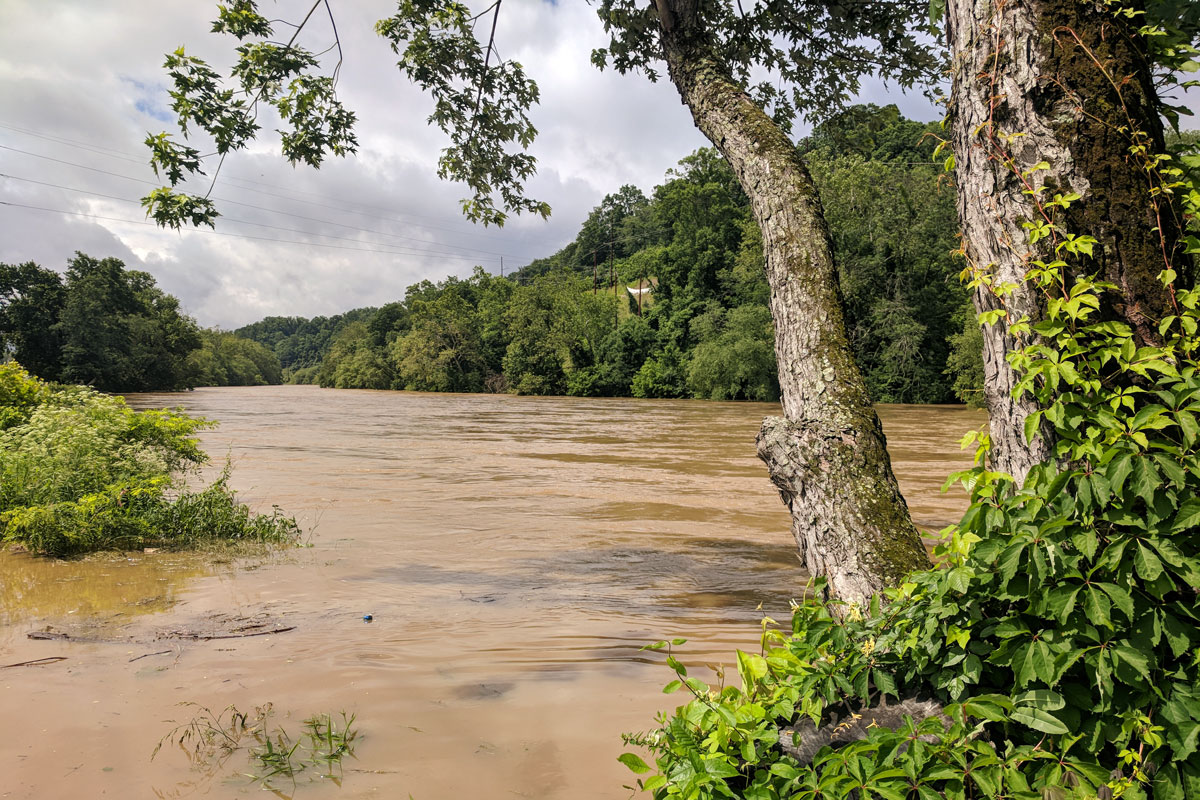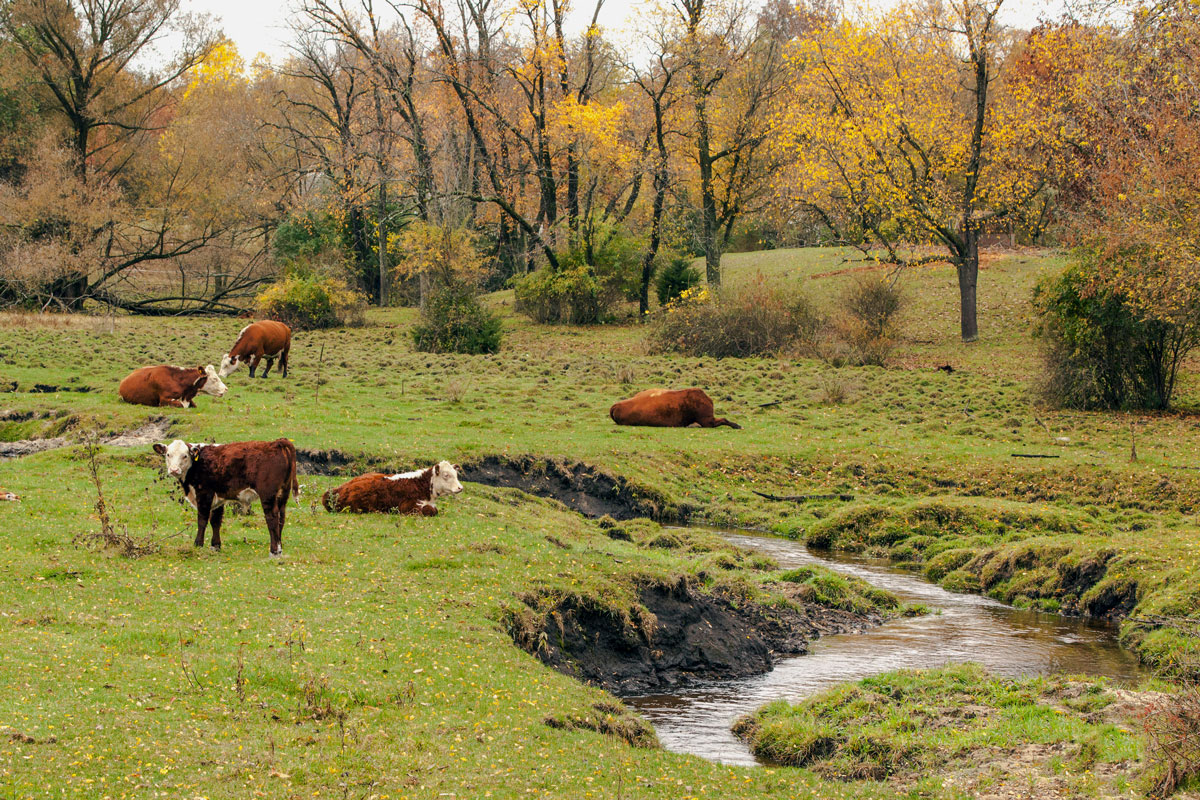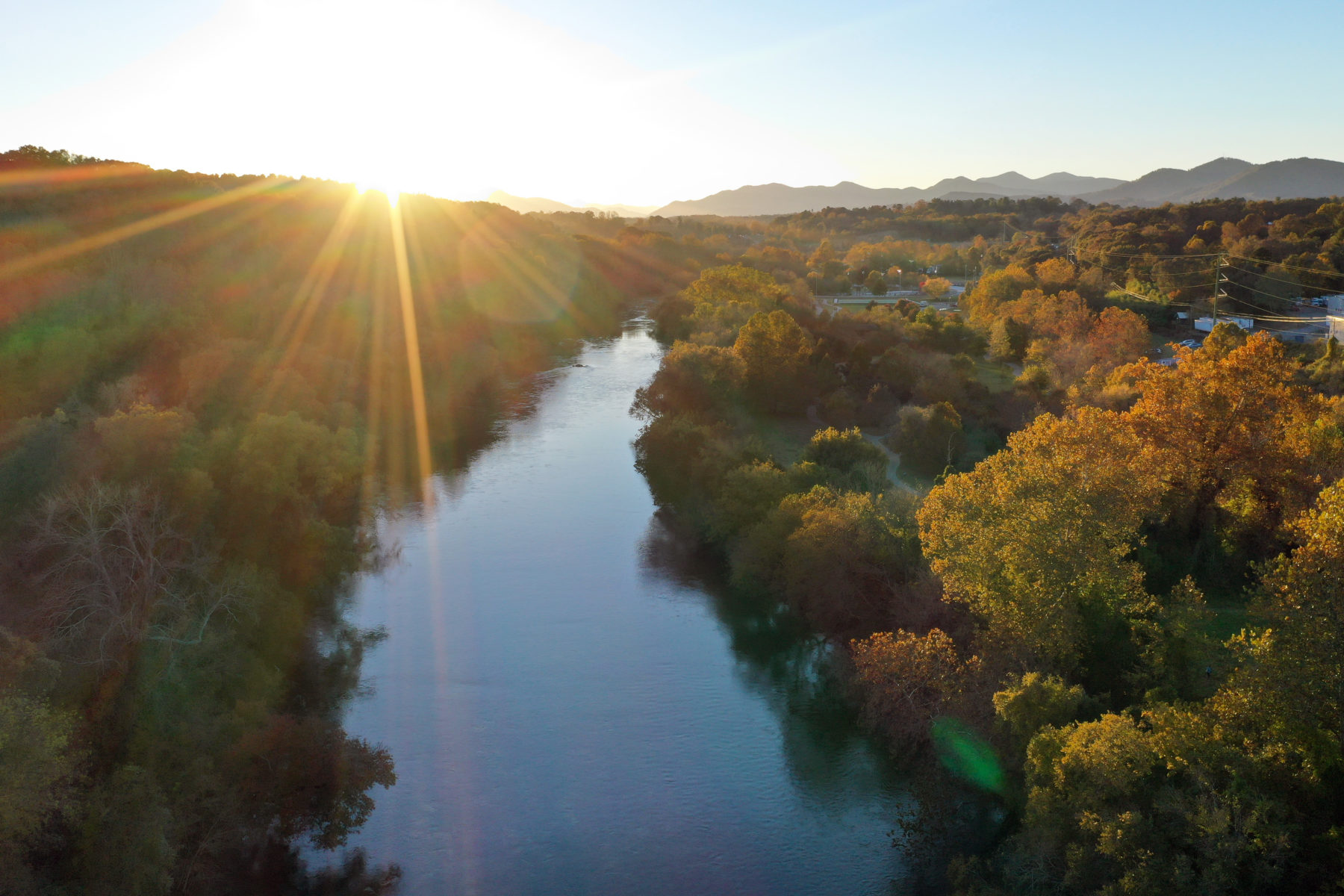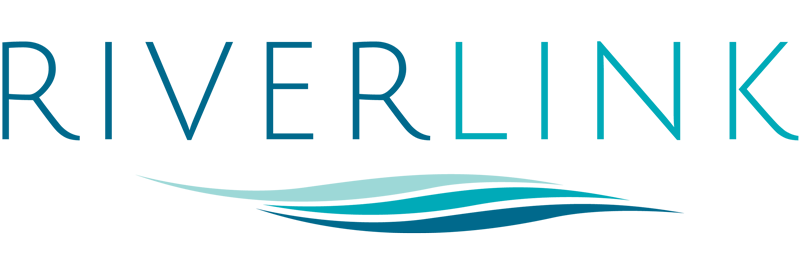
The French Broad River–one of the oldest rivers in the world, and an economic driver of some $3.2 billion to WNC’s regional economy–has been classified as “Impaired” by the North Carolina Department of Environmental Quality. The 303(d) list, named after the relevant section of the federal Clean Water Act, is a listing of impaired and threatened waterways, based on their designated uses such as a drinking water supply, or for boating, fishing and swimming. The federal Clean Water Act requires states to monitor water quality to ensure that waterways meet safe standards for their designated uses and publish an updated list of impaired waters every two years. North Carolina’s latest list includes 19 miles of the French Broad main stem from Long Shoals Rd. in Asheville to the Craggy Dam in Woodfin, plus two streams that drain into it within city limits: Town Branch and Bacoate Branch. While bacteria and sediment have been a problem in our region for many years, being listed as impaired takes it to another level of concern.
The draft NC 2022 303(d) list of impaired waters includes a section of the French Broad River that extends from Long Shoals Road in Arden to Craggy Dam in Woodfin, including popular sections for tubers, kayakers, canoers, SUPers, and others. This also includes the section through the River Arts District near downtown Asheville.
Fecal coliform bacteria are a group of bacteria that are found in human and animal feces. Sources of fecal contamination include:
- livestock manure (aka “Cows in the Creek”),
- failing septic systems (in rural areas where sewage treatment is not available)
- leaking sanitary sewer pipes,
- sanitary sewer overflows (happens during large rain events),
- wildlife feces,
- stormwater runoff.
Fecal coliforms are generally not harmful themselves, but they can indicate the presence of disease-causing organisms that also live in human and animal digestive systems. Their presence suggests that swimming may be unsafe.

The French Broad River being listed as impaired for bacteria is not cause for panic, but it should serve as a call to action. This post addresses five common questions about bacteria pollution in the French Broad River and offers actions the community can take to help address the issue.
1. Does 303(d) status mean the work we’ve been doing to clean up the river is not effective?
No, the French Broad River is undoubtedly healthier than it was when RiverLink started working to revitalize the river 35 years ago. At that time, the most pressing water quality issues stemmed from the industries that had built up along the river (and its railroad). Junkyards, warehouses, and illegal trash dumping sites dominated the riverbanks. It was a river polluted by chemical waste and runoff. Undoubtedly, there was also a bacteria problem then, too. It has been said that you could smell the river before you saw it.
Thanks to the work of Karen Cragnolin, Jean Webb, and other tireless river advocates in our community, most of the industrial blight along Asheville’s riverfront has been replaced with public green space and thriving businesses that benefit from a healthy river. The passage of the Clean Water Act in the 1970s also played a major role in improving water quality here.
2. Why is bacteria suddenly an issue?
Over the past decade, increased bacteria testing and a thriving local economy based on water recreation has aimed a spotlight on bacteria levels in the French Broad River. Bacteria is not a new threat to the French Broad River, but along with sediment pollution, it has become one of the most pressing issues we are dealing with.
3. Should people stop getting in the river until it is no longer listed as impaired?
The presence of fecal coliform in the river doesn’t mean that you must avoid getting in the river. Bacteria levels in the river vary widely on any given day, depending on a lot of factors including how much precipitation has occurred in the watershed. Bacteria levels are at their highest after a big rain event, and at their lowest when it hasn’t rained for several days. Your exposure to bacteria and other pollutants also depends on what you are doing on the river. Obviously, tubers will have more exposure than someone paddling in a canoe. MountainTrue’s Swim Guide publishes weekly bacteria data from numerous locations along the French Broad River during peak season for river recreation.
4. What is RiverLink doing about bacteria pollution in the river?
RiverLink’s mission is to promote the environmental and economic vitality of the French Broad River and its watershed. Addressing bacteria pollution in the river is critical to our mission. Aside from being a human health concern, we know that fecal coliform bacteria are indicators of the presence of pollutants that harm sensitive aquatic life dependent on clean water. Pollution directly impacts our local economy with its heavy dependence on outdoor tourism.
Since its inception, RiverLink has engaged in initiatives to address pollutants in the French Broad. Our Water Resources and Land Conservation programs address pollution sources by restoring degraded streams, reducing stormwater runoff, and protecting lands including riparian buffers that are critical to filtering pollutants.

Protecting water quality is a long game, however, and requires a collaborative effort that spans government, business, non-profit organizations, and private landowners. To that end, RiverLink will continue working with our partners to identify and address bacteria sources. This often means leveraging resources and providing expertise to help private landowners implement projects. Our staff also works with local governments and the county Metropolitan Sewerage District to find solutions. Currently, RiverLink staff serve on the City of Asheville Stormwater Task Force, Buncombe County Water Quality Task Force, and the Land Conservation Advisory Board.
5. What can community members do to help and are there resources available to assist?
We know that livestock, particularly cattle, and failing septic systems are major sources of bacteria in the French Broad River. There are funding resources available to help farmers plant streamside buffers, install livestock fencing to exclude animals from streams, and provide alternative water sources to better serve their livestock and protect water quality. Additionally, there are programs that provide technical assistance and funding to replace failing septic systems. To learn more about these resources, landowners can contact their local NC Resource Conservation & Development Councils, Soil & Water Conservation District, or an organization like RiverLink.
If there’s a “silver lining” to the French Broad River being placed on the 303(d) list of impaired waters, it’s that more federal funding will be available to address sources of bacteria. Once listed as impaired, streams become eligible for the EPA 319 Grant Program that is administered by the State of North Carolina. Municipalities and non-profit organizations can apply for this funding to implement projects that address the cause of impairment, in this case bacteria.
There are many ways that community members can help improve and protect clean water in the French Broad River. Pet waste is a source of bacteria pollution, so it’s important to not leave pet waste on the ground where rainwater can easily carry bacteria off site, and to locate dog kennels away from streams. If you have a stream on your property, plant the streambanks with native woody plants, the roots of which are much better than grass at stopping erosion and filtering pollutants before they enter the stream. Install a rain garden or rain barrel to keep runoff from leaving your property. Be an advocate for state and local ordinances that protect water quality. Talk to your local and state elected officials to urge them to provide funding to improve stormwater treatment and reduce its impact on our river.
Support the work of organizations like RiverLink whose mission is to promote the environmental and economic health of the French Broad River watershed. We intend to keep the French Broad moving on the path to recovery.
For media inquiries please contact our Watershed Resources Manager, Renee Fortner, at renee@riverlink.org | (828) 252-8474 x 114
